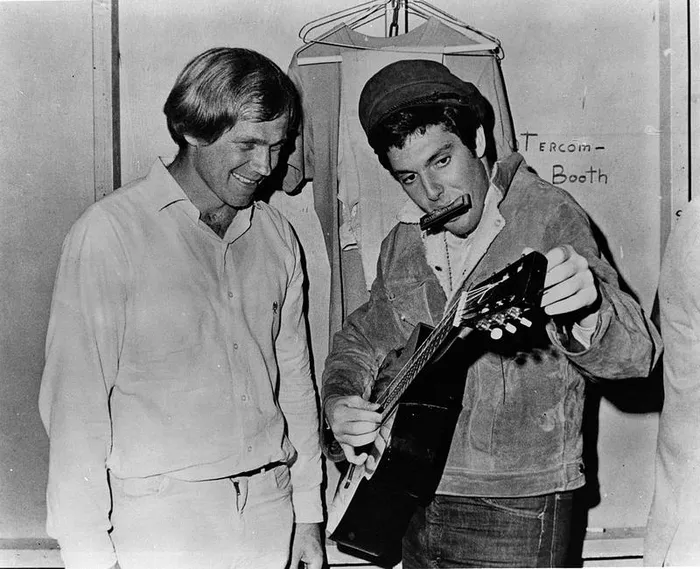The 1960s was a decade of profound cultural and social change, and no aspect of popular culture reflected this transformation more vividly than pop music. Pop music in the 1960s underwent a remarkable evolution, both in terms of style and cultural impact. In this article, we will delve into the most popular music of the 1960s, tracing the musical trends, iconic artists, and the societal shifts that shaped this era.
The Birth of a Musical Revolution
The 1960s marked the birth of a musical revolution that would resonate for generations to come. Pop music, as a genre, had been steadily gaining ground in the previous decades, but the ’60s saw it explode into the mainstream like never before. The term “pop music” itself became synonymous with the decade’s musical landscape.
The British Invasion and the Rise of Beatlemania
When discussing pop music in the 1960s, it is impossible to ignore the seismic impact of the British Invasion. The Beatles, in particular, spearheaded this movement, setting the stage for a global phenomenon known as “Beatlemania.” Their infectious melodies, charming personalities, and groundbreaking songwriting prowess reshaped the pop music landscape. With hits like “I Want to Hold Your Hand” and “Hey Jude,” the Beatles became the embodiment of 1960s pop music.
Motown: The Sound of Young America
While the British Invasion dominated the charts, another musical powerhouse was making its mark in the United States. Motown Records, based in Detroit, Michigan, introduced the world to a new brand of pop music that came to be known as “Motown.” Featuring artists like The Supremes, Marvin Gaye, and Stevie Wonder, Motown’s signature blend of soulful melodies and tight harmonies brought forth a unique subgenre within pop music.
Folk Music: A Voice for Change
Amidst the surge of pop music, folk music also played a significant role in the 1960s. Folk artists like Bob Dylan and Joan Baez used their music as a platform for social commentary and political activism. Dylan’s “Blowin’ in the Wind” became an anthem for the civil rights movement and encapsulated the era’s desire for change through pop music.
Psychedelic Pop: Music Meets Counterculture
As the 1960s progressed, pop music began to mirror the counterculture movement that was sweeping the nation. Psychedelic pop emerged as a unique subgenre, blending hallucinatory lyrics, experimental sounds, and mind-altering aesthetics. Bands like The Doors and Jefferson Airplane embraced this new musical frontier, creating music that reflected the era’s spirit of exploration and rebellion.
Pop Music on the Big Screen: The Impact of Film Soundtracks
The influence of pop music extended beyond the airwaves and record players. The 1960s also witnessed a significant convergence of pop music and cinema. Iconic films like “A Hard Day’s Night” featuring the Beatles and “The Sound of Music” with Julie Andrews demonstrated the symbiotic relationship between pop music and film, cementing the genre’s place in the hearts of audiences worldwide.
Woodstock and the Summer of Love
The pinnacle of 1960s pop music culture can be encapsulated in two events: Woodstock and the Summer of Love. Woodstock, the legendary music festival in 1969, showcased some of the era’s most iconic pop and rock acts, including Jimi Hendrix and Janis Joplin. Meanwhile, the Summer of Love in 1967 saw a convergence of thousands of young people in San Francisco’s Haight-Ashbury district, celebrating music, peace, and love. These events embodied the liberating spirit of pop music in the 1960s.
The End of an Era
As the 1960s drew to a close, pop music underwent further transformations. The Beatles disbanded in 1970, symbolizing the end of an era in pop music. The music industry saw the rise of new subgenres and artists, marking the transition from the ’60s into the ’70s.
Legacy of the 1960s Pop Music
The legacy of 1960s pop music is enduring and far-reaching. It laid the foundation for the modern music industry, shaping the way artists create and distribute their music. The concept of a “pop star” emerged during this decade, with artists like Elvis Presley, The Beatles, and The Supremes becoming household names. Their influence can still be seen in today’s pop music landscape.
Conclusion
In conclusion, the 1960s was a decade of musical transformation, and pop music was at the forefront of this revolution. The term “pop music” became synonymous with innovation, cultural change, and artistic expression. From the British Invasion to the rise of Motown, from folk music’s social commentary to the psychedelic sounds of the counterculture, the ’60s saw pop music evolve in diverse and captivating ways. It left an indelible mark on the world, and its influence can still be heard and felt in the pop music of today. The 1960s will forever be remembered as a golden era of pop music, a time when melodies and lyrics had the power to change the world.

